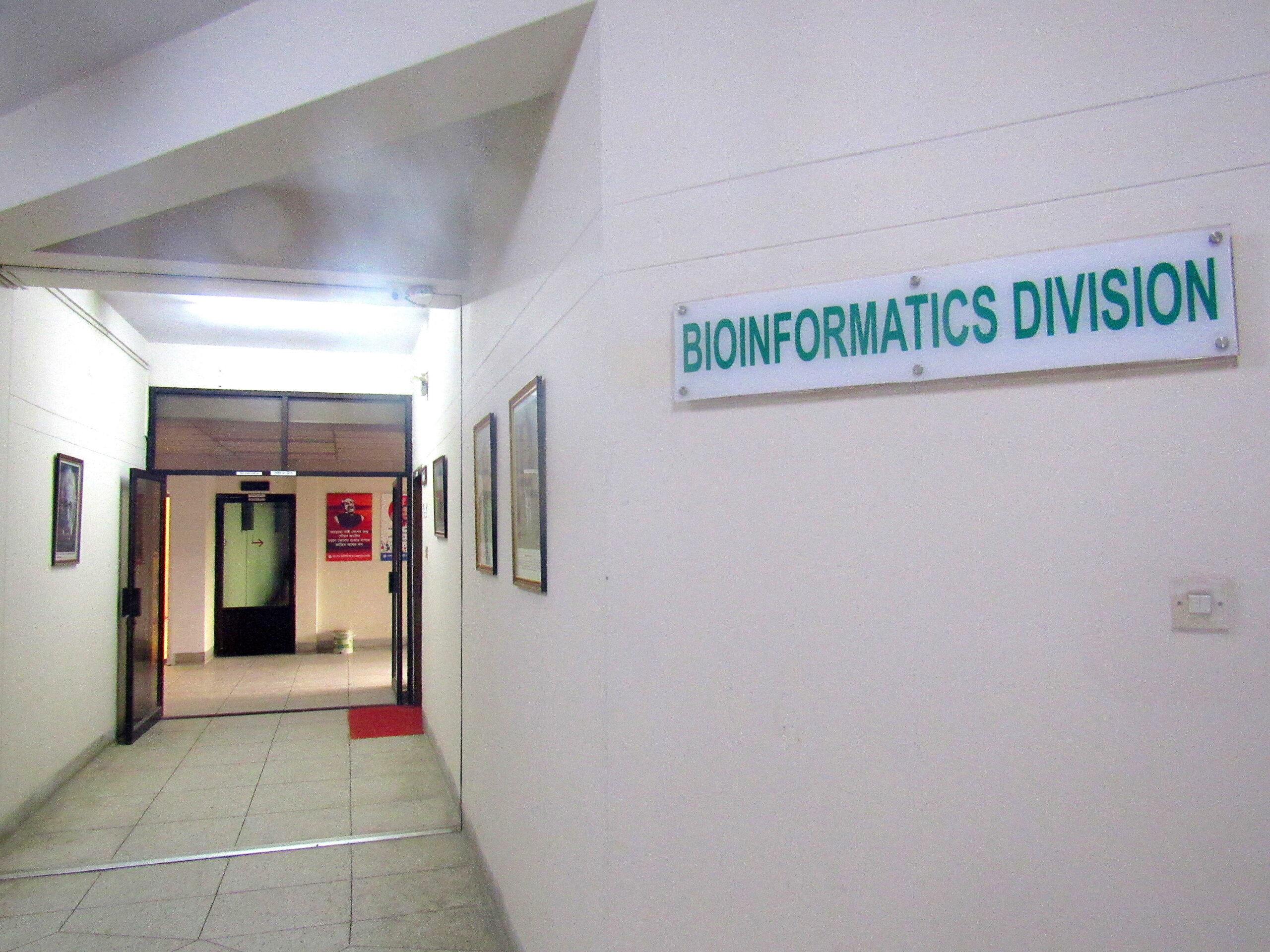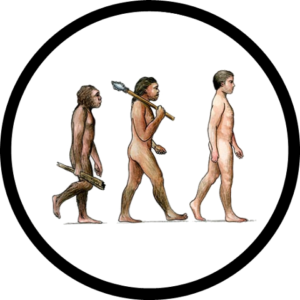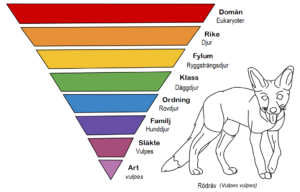- What is Bioinformatics?
- Bioinformatics is the interdisciplinary field that combines biology, computer science, and mathematics to analyze and interpret biological data.
- Name the primary databases used in Bioinformatics.
- GenBank, UniProt, and the Protein Data Bank (PDB).
- Define BLAST.
- BLAST (Basic Local Alignment Search Tool) is a widely used bioinformatics tool for comparing biological sequences, such as DNA, RNA, or protein sequences, to a database to identify homologous sequences.
- What is the purpose of sequence alignment in Bioinformatics?
- Sequence alignment is used to identify similarities and differences between biological sequences, such as DNA, RNA, or protein sequences, to infer evolutionary relationships or functional similarities.
- Name the algorithm commonly used for pairwise sequence alignment.
- The Needleman-Wunsch algorithm.
- Define homology.
- Homology refers to the evolutionary relationship between biological sequences that share a common ancestor.
- What is the function of the FASTA format?
- The FASTA format is used to represent biological sequences, such as DNA, RNA, or protein sequences, in a standardized text format.
- Name the software commonly used for multiple sequence alignment.
- Clustal Omega, MUSCLE, and MAFFT are commonly used software for multiple sequence alignment.
- Define phylogenetics.
- Phylogenetics is the study of the evolutionary relationships between organisms based on genetic data.
- What is the purpose of phylogenetic trees in Bioinformatics?
- Phylogenetic trees are used to visualize and analyze the evolutionary relationships between organisms based on genetic data, such as DNA or protein sequences.
- Name the software commonly used for building phylogenetic trees.
- PHYLIP, MEGA, and MrBayes are commonly used software for building phylogenetic trees.
- Define protein structure prediction.
- Protein structure prediction is the process of predicting the three-dimensional structure of a protein based on its amino acid sequence.
- What is the purpose of protein structure prediction in Bioinformatics?
- Protein structure prediction helps in understanding the function and interactions of proteins, which is important for drug design, molecular biology, and biotechnology.
- Name the two main approaches for protein structure prediction.
- Homology modeling (comparative modeling) and ab initio (de novo) modeling are the two main approaches for protein structure prediction.
- Define molecular docking.
- Molecular docking is a computational method used to predict the binding orientation and affinity of a small molecule (ligand) to a target protein (receptor).
- What is the function of molecular docking in Bioinformatics?
- Molecular docking is used in drug discovery and design to predict the interactions between small molecules and target proteins, helping identify potential drug candidates.
- Name the software commonly used for molecular docking.
- AutoDock, AutoDock Vina, and DOCK are commonly used software for molecular docking.
- Define next-generation sequencing (NGS).
- Next-generation sequencing (NGS) refers to high-throughput sequencing technologies that enable rapid and cost-effective sequencing of DNA or RNA.
- What is the purpose of transcriptomics in Bioinformatics?
- Transcriptomics is the study of all the RNA molecules (transcripts) produced by a cell or organism, providing insights into gene expression patterns, regulation, and function.
- Name the software commonly used for analyzing transcriptomic data.
- DESeq2, edgeR, and Cufflinks are commonly used software for analyzing transcriptomic data.
- Define metagenomics.
- Metagenomics is the study of genetic material recovered directly from environmental samples, such as soil, water, or the human microbiome, without the need for cultivation.
- What is the purpose of metagenomics in Bioinformatics?
- Metagenomics allows researchers to study the genetic diversity, composition, and functional potential of microbial communities in various environments.
- Name the software commonly used for analyzing metagenomic data.
- QIIME, Mothur, and MG-RAST are commonly used software for analyzing metagenomic data.
- Define genome assembly.
- Genome assembly is the process of reconstructing the complete DNA sequence of an organism’s genome from short DNA sequencing reads generated by next-generation sequencing technologies.
- What is the purpose of genome assembly in Bioinformatics?
- Genome assembly helps in understanding the genetic makeup, organization, and evolution of organisms, which is essential for various biological and medical applications.
- Name the software commonly used for genome assembly.
- Velvet, SPAdes, and SOAPdenovo are commonly used software for genome assembly.
- Define gene prediction.
- Gene prediction is the process of identifying the locations and structures of protein-coding genes within a DNA sequence.
- What is the purpose of gene prediction in Bioinformatics?
- Gene prediction helps in annotating genomes, understanding gene function, and studying gene expression and regulation.
- Name the software commonly used for gene prediction.
- Augustus, GeneMark, and Glimmer are commonly used software for gene prediction.
- Define systems biology.
- Systems biology is an interdisciplinary approach that combines experimental and computational methods to study biological systems as integrated networks of genes, proteins, and other molecules.
- What is the purpose of systems biology in Bioinformatics?
- Systems biology aims to understand the complex behavior of biological systems, such as cells, tissues, and organisms, by modeling their dynamic interactions and regulatory networks.
- Name the software commonly used for modeling biological pathways.
- Pathway Tools, Cytoscape, and Systems Biology Markup Language (SBML) are commonly used software for modeling biological pathways.
- Define pharmacogenomics.
- Pharmacogenomics is the study of how genetic variations influence an individual’s response to drugs, including drug efficacy, toxicity, and metabolism.
- What is the purpose of pharmacogenomics in Bioinformatics?
- Pharmacogenomics helps in personalized medicine by predicting drug responses based on an individual’s genetic makeup, leading to more effective and safer drug treatments.
- Name the software commonly used for pharmacogenomic analysis.
- PharmGKB, OpenPGx, and CPIC are commonly used resources for pharmacogenomic analysis.
- Define structural bioinformatics.
- Structural bioinformatics is the study of the three-dimensional structures of biological molecules, such as proteins, nucleic acids, and complexes, and their interactions.
- What is the purpose of structural bioinformatics in Bioinformatics?
- Structural bioinformatics helps in understanding the structure-function relationships of biomolecules, predicting protein structures, and designing drugs targeting specific proteins.
- Name the software commonly used for protein structure visualization.
- PyMOL, VMD, and Chimera are commonly used software for protein structure visualization.
- Define protein-protein interaction (PPI) networks.
- Protein-protein interaction (PPI) networks represent the physical and functional interactions between proteins within a cell or organism.
- What is the purpose of protein-protein interaction (PPI) networks in Bioinformatics?
- PPI networks help in understanding cellular processes, signaling pathways, and disease mechanisms by revealing protein interactions and functional relationships.
- Name the software commonly used for analyzing protein-protein interaction (PPI) networks.
- Cytoscape, STRING, and BioGRID are commonly used software for analyzing protein-protein interaction (PPI) networks.
- Define structural alignment.
- Structural alignment is the process of comparing the three-dimensional structures of biological molecules, such as proteins or nucleic acids, to identify similarities and differences.
- What is the purpose of structural alignment in Bioinformatics?
- Structural alignment helps in predicting functional similarities, inferring evolutionary relationships, and identifying conserved structural motifs among biomolecules.
- Name the software commonly used for structural alignment.
- DALI, TM-align, and CE are commonly used software for structural alignment.
- Define functional annotation.
- Functional annotation is the process of assigning biological functions, properties, or annotations to genes, proteins, or other biomolecules based on experimental evidence or computational predictions.
- What is the purpose of functional annotation in Bioinformatics?
- Functional annotation helps in interpreting genomic and proteomic data, understanding gene function, and identifying potential targets for further experimental studies.
- Name the databases commonly used for functional annotation.
- Gene Ontology (GO), Kyoto Encyclopedia of Genes and Genomes (KEGG), and Pfam are commonly used databases for functional annotation.
- Define comparative genomics.
- Comparative genomics is the study of the similarities and differences in the genomes of different organisms to understand evolutionary relationships, gene function, and genome evolution.
- What is the purpose of comparative genomics in Bioinformatics?
- Comparative genomics helps in identifying conserved genes, regulatory elements, and evolutionary events, as well as understanding genome structure and organization across different species.
- Name the software commonly used for comparative genomics.
- OrthoFinder, OrthoMCL, and Ensembl are commonly used software for comparative genomics.



